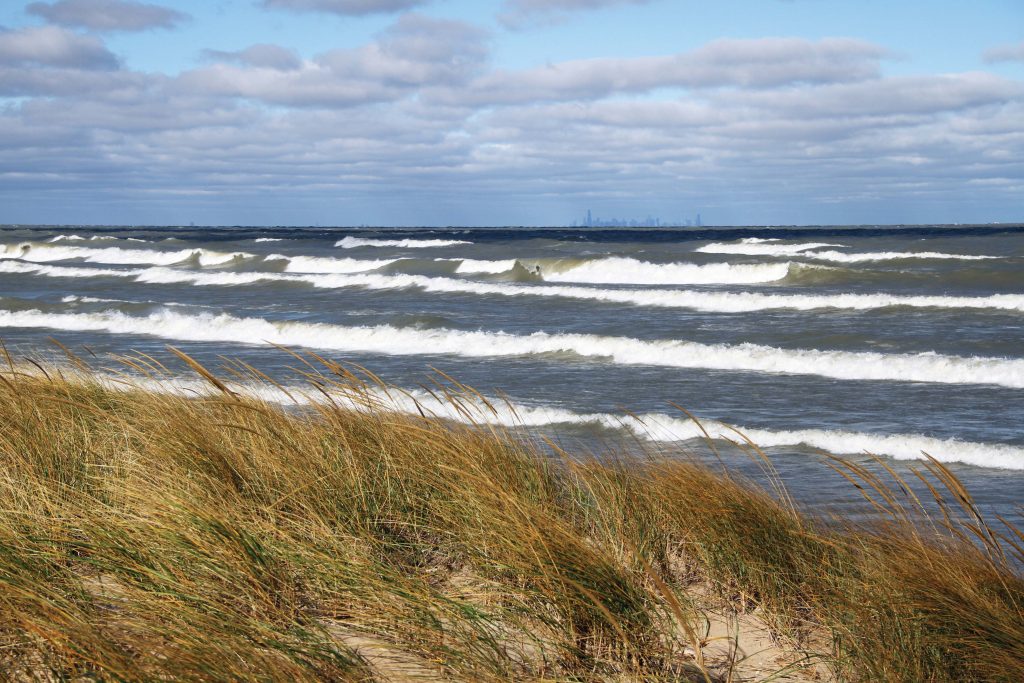
BY RICHARD G. BIEVER
When we think of “treasures,” we might think of things buried in our own backyards — gold and gemstones left by the forces of nature … gold and jewels left by the devices of men.
We might think of precious people who left marks on history, or precious plants and animal life that are so rare they soon may be only a part of history.
This month, we connect you to four of Indiana’s “National Treasures.” These are properties that — for natural, historical and cultural reasons — have been set aside for preservation and are managed by the federal government. Though uniquely “Hoosier,” these places transcend just Indiana and are significant to our nation.
When making plans for summer vacations and weekend excursions, consider these four special places — especially if you’ve never been to them before or it’s been a while. One, though it hasn’t changed, has suddenly found itself much more prominent in the national consciousness of protected places.
Indiana Dunes National Park
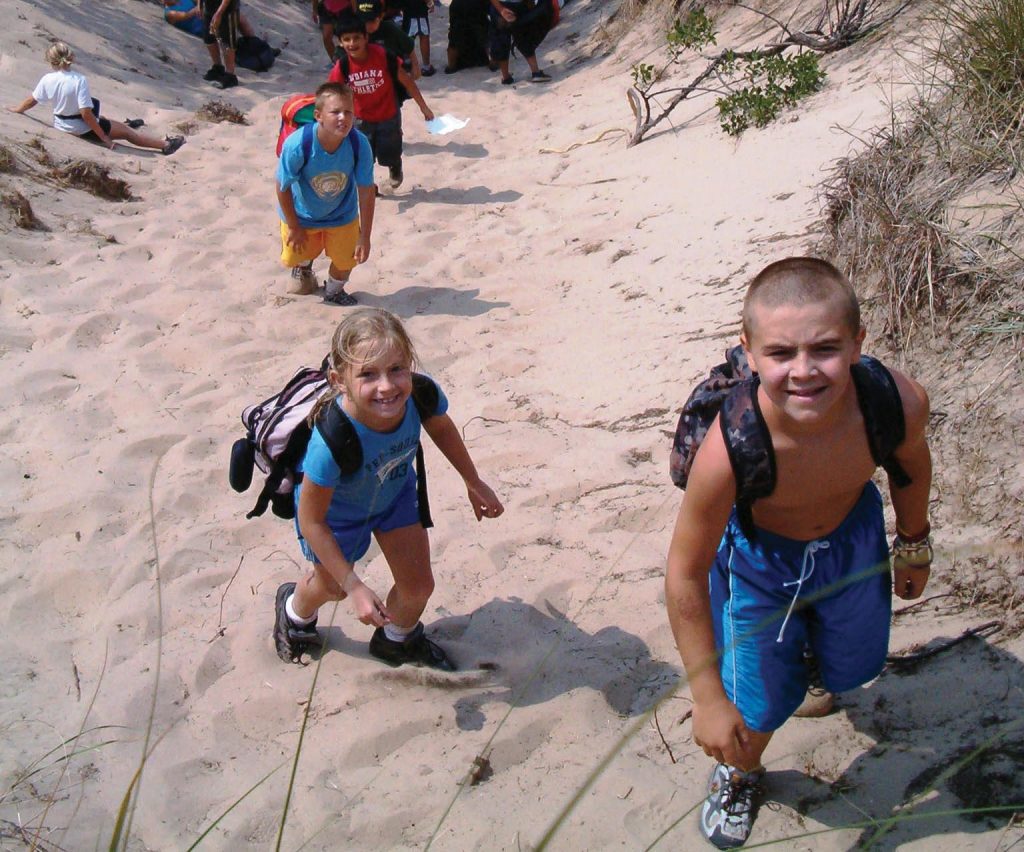
The Nation’s Newest National Park
Address
1215 N. State Road 49
Porter, IN 46304
219-395-1882
www.nps.gov
A northerly wind curls the blue water into whitecaps and rustles the tall dune grasses. From the sandy shoreline, the distant skyline of Chicago seems to rise from the water and stands silhouetted against the pale blue hazy horizon like a tiny pewter chess set.
Share this imagery with most folks not familiar with the location, and they’d say it was somewhere exotic. At least … more exotic than Indiana’s northwest corner known mostly for its industry, steel mills and urban decay. But not only is it Indiana, it’s the nation’s newest “National Park.”
The Indiana Dunes National Park — formerly “National Lakeshore” — eagerly awaits the seasonal return of regulars well-acquainted with the fascinating flora, fauna and natural formations found along this special 15 miles of Lake Michigan beachhead. And park personnel are anxious to welcome the newbies who never knew such a naturally pristine and “otherworldly” experience awaited them not far from rusted rail yards and shuttered factories.
Out of the storm clouds of the federal government shutdown at the start of the year came this five-line silver lining for the shoreline and its advocates. Tucked a couple of hundred pages into the thousand-page omnibus bill President Trump signed Feb. 15 were the following words: “Public Law 89–761 is amended — striking ‘National Lakeshore’ … each place it appears and inserting ‘National Park.’”
And just like that, the nation gained its 61st “National Park.” Indiana Dunes joined the prestigious ranks of Acadia, Glacier, The Grand Canyon, the Great Smoky Mountains, Yellowstone and the like. Combining the attendance at the Indiana Dunes National Park with the Indiana Dunes State Park — which the National Park surrounds — Indiana Dunes is expected to be the equivalent of the seventh most visited national park in the country after Yellowstone. It is already Indiana’s top tourist attraction with 3.6 million visitors last year.
The Dunes’ National Park recognition took effect immediately, though changing “National Lakeshore” on signage will be a process.
“It’s a different name, but it’s really the same thing,” said Dunes Park Ranger Bruce Rowe. “All [National Park Service] sites, whether it’s a National Lakeshore, a National Historic Site, or a National ‘quote unquote’ Park are protected at the same level.”
While technically the “Park” status may not change things with how it’s preserved and protected by the NPS, it certainly feels like a promotion for those who promote the area for tourism. “This name change is wonderful,” Rowe added. “It gets us more prominence, more publicity, so that we can share this special place with more people.
“The day after the name change, we got a call from a guy who is doing a book on all the national parks, but he was doing one on the 60 national parks, not on the 418 national park sites. So, he said, ‘I’m stopping production on my book. I want to come up here. I want to get photographs and interview people.’ We ended up in a book that we wouldn’t have been in otherwise.”
A special place
While the Dunes may not possess the sublime beauty and grand vistas of the namebrand “Grand” and “Great” picture postcard parks we all know, Rowe said the beauty of the Dunes — beyond the picturesque actual shoreline and tall dunes — lies in its detail of diversity.
The park’s 1,100 native plants make it the fourth most diverse in plant life within the entire National Park System. “We have 28 species of orchids,” noted Rowe, “which is more than the state of Hawaii has. Certainly that number of orchids is just incredible.
“Geologists have told me that just the ancient shorelines of Lake Michigan are preserved here better than anywhere else that they had seen,” he said. “It’s the best example of the history of the Great Lakes that’s intact.”
Indiana Dunes Birding Festival May 16-19
Showcasing over 370 species of birds found along the beaches, wetlands, prairies, and forests that encompass over 40 miles of Lake Michigan shoreline.
Lincoln Boyhood National Memorial
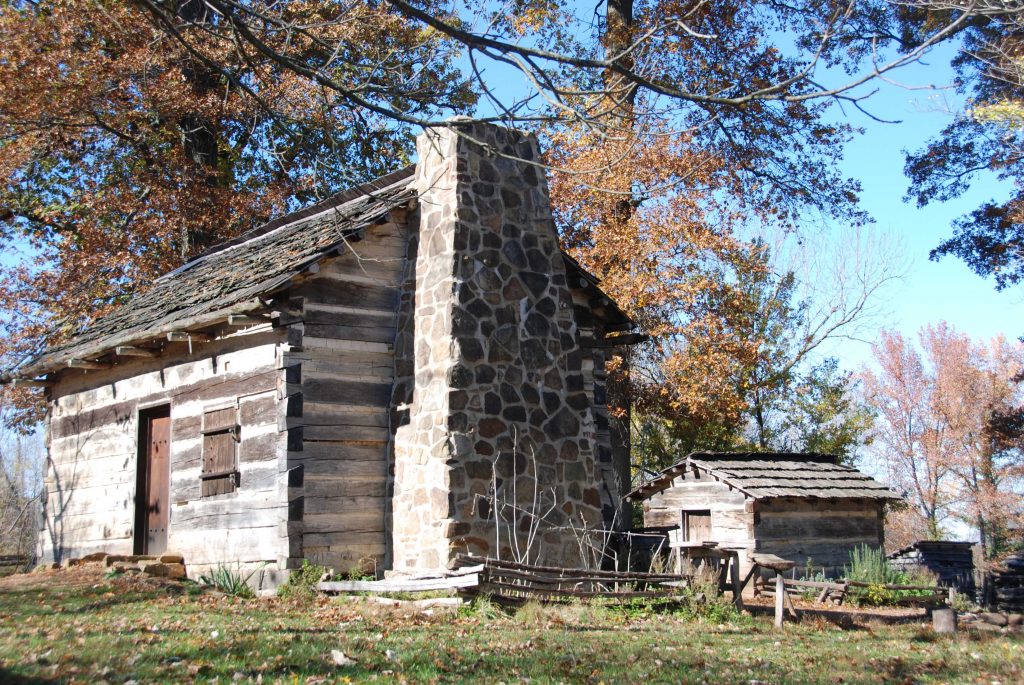
Boyhood Home Lets Visitors Enter Lincoln-era Frontier
Address
3027 E. South St. | P.O. Box 1816
Lincoln City, IN 47552
812-937-4541
In the same woods where Abraham Lincoln “grew up” from a 7-year-old boy to a 21-year-old man, visitors to the Lincoln Boyhood National Memorial can contemplate Lincoln; visit the headstone of his mother; or watch “pioneers” go about the typical daily chores of the 1820s at the Living Historical Farm.
The northern Spencer County memorial site is located on about 200 acres which include the land that was the Lincoln homestead from 1816-1830. The National Park Service has preserved and operated the site since 1962.
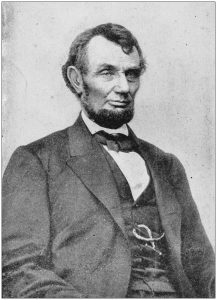
It was here that the Lincoln family settled in December of 1816 — within days of Indiana’s statehood — after crossing the Ohio River from Kentucky. The Lincolns came to Indiana for a new life on land free of title disputes and the taint of slavery.
It would be here that Lincoln spent his formative years which would be a quarter of his life. In his boyhood years in Indiana come the tales of his intermittent schooling and rail splitting. Here he developed his intellect, his wit, his interest in law, his deep compassion, and the melancholy side of his nature.
Life on the Indiana frontier was not easy. Work was hard and life was harsh. At age 9, Lincoln lost his mother, Nancy Hanks Lincoln, to milk-sickness that struck the Little Pigeon Creek settlement. We now know it was brought on by drinking the tainted milk or eating the meat of cows which ate the toxic white snakeroot growing in the woods.
Her headstone is along the trail that runs north from the national memorial’s visitor center to the Lincoln cabin site and the historical farm. Later, Lincoln’s sister, Sarah, died in childbirth. She’s buried in a cemetery inside Lincoln State Park across the road from the national boyhood site.
In 1829, Abraham and his father had started work on a new family cabin. But before it was completed, they migrated to Illinois with the family of Abe’s stepmother. A century later, an archaeological excavation of the farm discovered the foundation outlining the boundary of that unfinished cabin and the fireplace hearthstones. It was preserved in a bronze casting and surrounded by a low-standing wall near the historical farm.
Next to the bronze cast stands the replica farmstead. The log cabin and outbuildings are the types of structures Lincoln would have been familiar with and come from within and around Spencer County. Park rangers in full period clothing work the 1820s-style farm, making it a living history site. The Living Historical Farm is open seasonally, from mid-spring to early fall; it cultivates crops, raises livestock, and uses and displays historic farm implements.
In addition, there are nature trails and the “Trail of Twelve Stones” which features stones taken from places of significance during Lincoln’s life. There are over 2 miles of hiking trails in the park.
The boyhood memorial was originally part of the Indiana State Parks. In 1962, the land was deeded to the federal government and is now administered by the National Park Service.
The visitor center offers a small museum, theater and gift shop. The center is bookmarked by two memorial halls on either end: a chapel and a meeting hall. The halls can be rented for weddings and public gatherings.
The building itself features exterior stone relief sculptures depicting different periods of Lincoln’s life. Originally the two memorial halls, built by the state in 1940, were connected by an arched cloister. The visitor center was created when the Park Service was deeded the site by enclosing the cloister.
George Rogers Clark National Historical Park
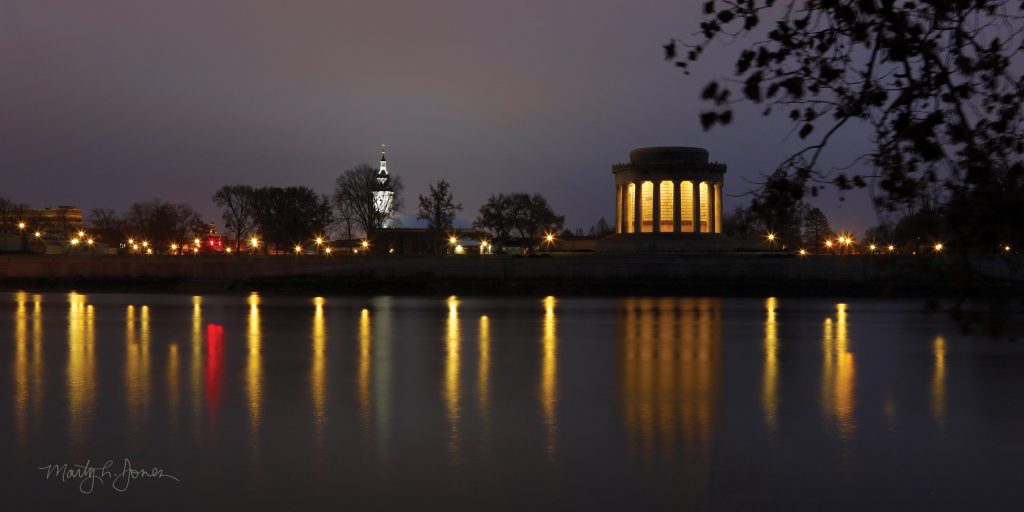
The Place Where Clark Sacked Fort Sackville
Address
401 S. Second St.
Vincennes, IN 47591
812-882-1776
A quarter century before William Clark met up with Meriwether Lewis at the Falls of the Ohio River in October 1803 to begin their little camping expedition to the Pacific Ocean, his older brother George Rogers Clark made his mark in history by helping create the “continental nation” Lewis and Clark explored.
In February 1779 during the Revolutionary War, Lt. Col. George Rogers Clark led his army of about 170 Americans and Frenchmen on an epic 18-day trek through the freezing floodwaters of the Illinois country to capture Fort Sackville from the British in Vincennes. The fort’s capture assured United States claims to the frontier, an area nearly as large as the original 13 states. (Please see the February issue and the Knox County “County of the Month” feature for more details.)
Dedicated in 1936, the Clark memorial, on the banks of the Wabash at what is believed to be the site of the fort, passed through a number of administrative entities before the U.S. National Park Service assumed responsibility in 1966. The memorial building is a circular granite structure surrounded by 16 granite fluted Greek Doric columns.
Inside is a larger than life bronze statue of Clark and large murals featuring key events in Clark’s military career. Be sure to check out the visitor center and stroll the grounds along the Wabash River.
The Hoosier National Forest
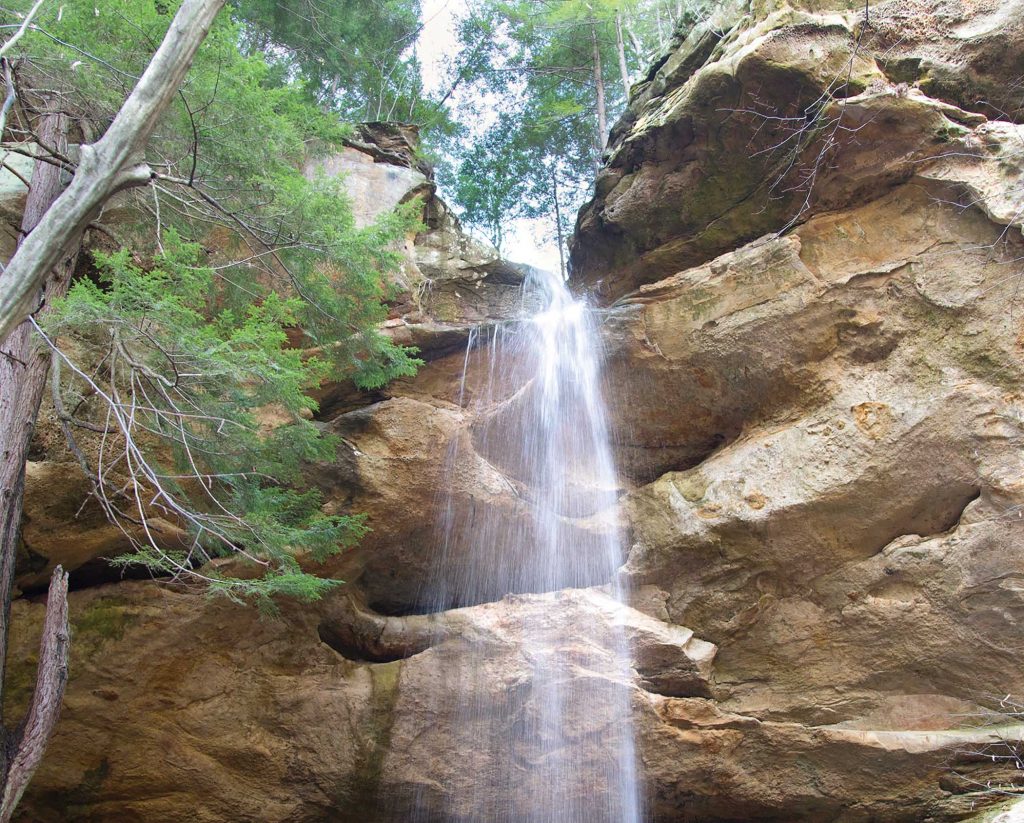
Mecca For Recreation
HNF Headquarters
811 Constitution Ave.
Bedford, IN 47421
812-275-5987 | 1-866-302-4173
HNF Regional Office
248 15th St.
Tell City, IN 47586
812-547-7051
The spine of south central Indiana’s forested hills pays no heed to the state’s national reputation as a flat farming state. Through thick canopies of leaves in summer, sunlight barely dapples the deep lush hollows and forest floor where the box turtles and centipedes hang out. Ridge tops open up to reveal vistas of rolling hills or the wide and blue meandering Ohio River below.
This is Hoosier National Forest country.
The Hoosier National Forest covers more than 203,000 acres across nine counties from Bloomington south to the Ohio. Managed by the U.S. Forest Service, the HNF — with its rolling hills, back-country trails, and rural crossroad communities — is a treasure where visitors can explore, fish, hike, hunt, camp, and reconnect with nature.
The trail system offers some 266 miles to hike and allows for horseback riding and mountain biking. Campgrounds are located adjacent to large lakes and connect to some of the trail systems. Five horse camps are associated with equestrian trails. Hardin Ridge Recreation Area is popular with boaters and anglers alike because of easy access to Lake Monroe. Recreation areas are also located on Celina Lake, Indian Lake, Tipsaw and German Ridge Lake. The Little Blue and Lost River offer opportunities for seasonal float trips through the Forest.
The scenic national byway that parallels the Ohio River along the Indiana border weaves through historic towns and rolling hills. It provides panoramic views of the forest and countryside.
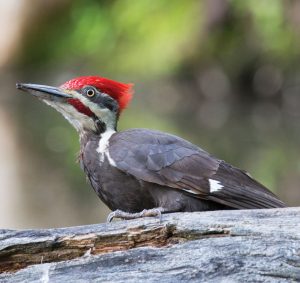
The mix of open land and forest provides a wide variety of wildlife habitats. Common mammals include white-tailed deer, fox, woodchuck, opossum, and gray squirrel. Common birds are turkey, pileated woodpecker, several neotropical migrant songbirds, and migratory waterfowl. Bald eagles can be found around lakes Monroe and Patoka.
Archaeological sites are still being discovered, indicating human use of this area for thousands of years. Cemeteries and historic buildings on the Forest give visitors a glimpse into the past.
Along with the plentiful recreation and hiking opportunities, here are some other fascinating features of the Hoosier National Forest:
• Buzzard Roost offers scenic views and trail along the Ohio River in northeastern Perry County.
• The Charles C. Deam Wilderness Area, established in 1982, is the only recognized wilderness area left in Indiana. This means that no motorized vehicles are allowed in the area, and, instead, mules and horses must be used to maintain hiking trails. There are almost 12,500 acres of pristine forest land bordering the southeast side of Lake Monroe. Hikers, backpackers, and horseback riders are drawn to the wilderness and its 39 miles of trails.
• Hemlock Cliffs Recreation Area in Crawford County contains one of the most scenic hiking trails in Indiana. The box-shaped canyon includes sandstone formations, seasonal water falls and rock shelters.
• The Lick Creek Settlement, south of Chambersburg, was a settlement of free blacks led by the Quaker Jonathan Lindley from around 1819 to around 1865. Research is ongoing on whether it may have been a way station on the Underground Railroad.
• Pioneer Mothers Memorial Forest, south of Paoli, is an 88-acre old-growth forest and archaeological site. It is the Forest’s only Research Natural Area.
• Rickenbaugh House in Perry County is a stone house built in 1874, used as a local post office and church meeting house. It is now on the National Register of Historic Places.
RICHARD G. BIEVER is senior editor of Indiana Connection



